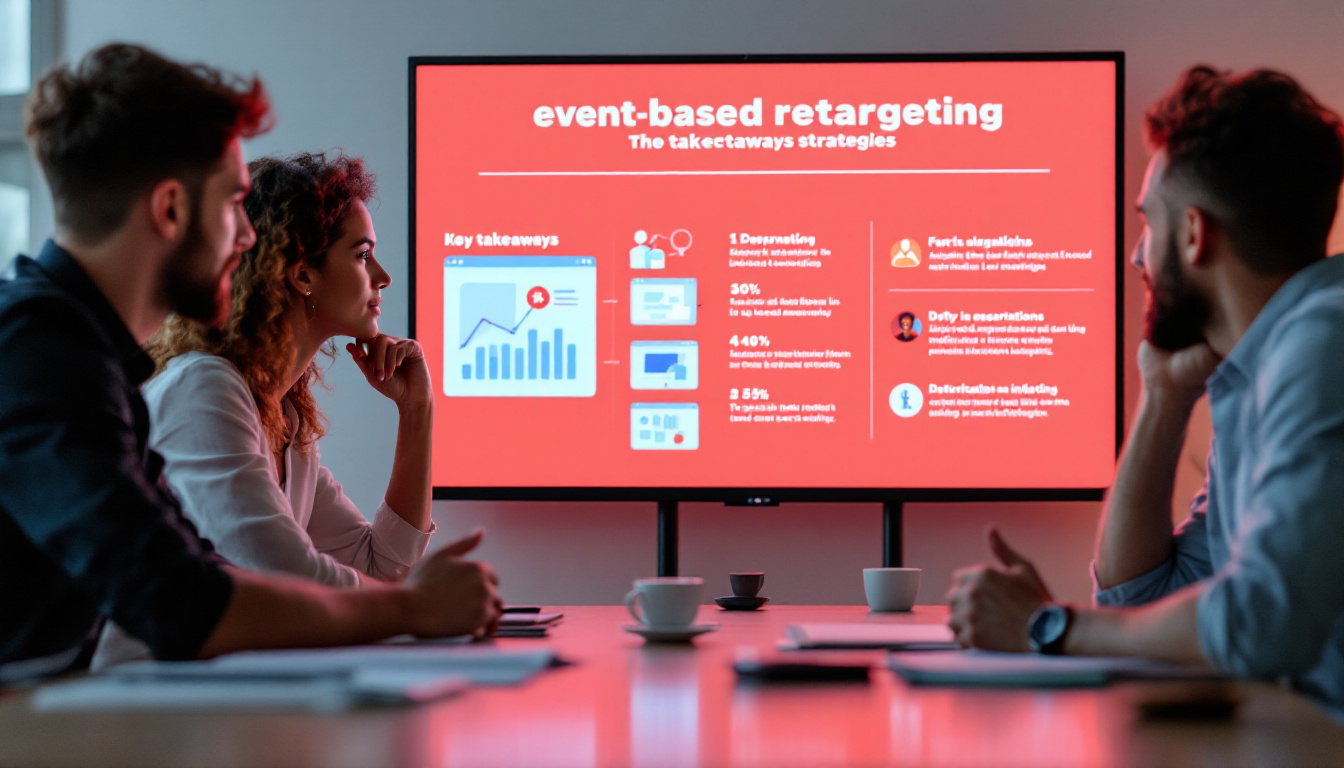What is event-based retargeting?
Event-based retargeting is a marketing strategy that involves tracking specific actions or ‘events’ that users perform on a website or app, and then using this information to serve them with personalized ads. The aim is to re-engage users who have shown interest in a product or service, and encourage them to complete a desired action, such as making a purchase or signing up for a newsletter.
As a form of online advertising, event-based retargeting is a powerful tool for businesses looking to increase their conversion rates and boost customer engagement. By focusing on users who have already interacted with a brand in some way, it allows for a more targeted and effective approach to marketing.
Understanding Event-Based Retargeting
Event-based retargeting is based on the principle of behavioral targeting. This involves tracking the online behavior of users in order to understand their interests and preferences, and then using this information to serve them with relevant ads. The ‘events’ that are tracked can include a wide range of actions, from viewing a product page to adding an item to a shopping cart.
Once a user has performed a tracked event, they are ‘tagged’ with a cookie. This cookie then enables the retargeting platform to identify the user and serve them with personalized ads, which are designed to encourage them to return to the website and complete the desired action.
Types of Events
The types of events that can be tracked for the purposes of event-based retargeting can vary widely, depending on the nature of the business and the specific goals of the marketing campaign. Some of the most common types of events include:
- Product page views: This involves tracking when a user views a specific product page. The user can then be retargeted with ads for that product, in an attempt to encourage them to make a purchase.
- Cart abandonment: This involves tracking when a user adds an item to their shopping cart but does not complete the purchase. The user can then be retargeted with ads reminding them of the items in their cart, in an attempt to encourage them to complete the purchase.
- Form abandonment: This involves tracking when a user starts filling out a form (such as a sign-up form or a contact form) but does not complete it. The user can then be retargeted with ads encouraging them to complete the form.
These are just a few examples of the types of events that can be tracked for the purposes of event-based retargeting. The key is to identify the actions that are most indicative of a user’s interest in a product or service, and then use this information to serve them with highly relevant and personalized ads.
Benefits of Event-Based Retargeting
Event-based retargeting offers a number of benefits for businesses. One of the main advantages is that it allows for a more targeted approach to advertising. By focusing on users who have already shown an interest in a product or service, it increases the chances of converting these users into customers.

Another benefit of event-based retargeting is that it can help to increase customer engagement. By serving users with personalized ads based on their previous actions, it can help to create a more engaging and relevant user experience. This can in turn help to build a stronger relationship between the user and the brand, and encourage repeat business.
Increased Conversion Rates
One of the main benefits of event-based retargeting is that it can help to increase conversion rates. This is because it focuses on users who have already shown an interest in a product or service, and are therefore more likely to convert.
By serving these users with personalized ads that are relevant to their interests, it can help to encourage them to return to the website and complete the desired action. This can lead to higher conversion rates, and ultimately, increased revenue for the business.
Improved Customer Engagement
Another benefit of event-based retargeting is that it can help to improve customer engagement. By serving users with personalized ads based on their previous actions, it can help to create a more engaging and relevant user experience.
This can help to build a stronger relationship between the user and the brand, and encourage repeat business. It can also help to increase customer loyalty, as users are more likely to feel valued and understood by a brand that takes the time to serve them with personalized content.
Implementing Event-Based Retargeting
Implementing event-based retargeting involves a number of steps. The first step is to identify the specific events that you want to track. These should be actions that are indicative of a user’s interest in a product or service, and that align with the goals of your marketing campaign.
Once you have identified the events that you want to track, the next step is to set up the tracking technology. This typically involves adding a piece of code (known as a ‘pixel’) to your website or app, which can track the actions of users and ‘tag’ them with a cookie.
Setting Up the Tracking Technology
The tracking technology for event-based retargeting typically involves a piece of code known as a ‘pixel’. This pixel is added to your website or app, and is used to track the actions of users and ‘tag’ them with a cookie.
When a user performs a tracked event, the pixel fires and sends a signal to the retargeting platform. This signal contains information about the user and the event that they performed, which can then be used to serve them with personalized ads.
Creating Personalized Ads
Once the tracking technology is set up and the events are being tracked, the next step is to create the personalized ads. These ads should be designed to encourage the user to return to the website and complete the desired action.
The ads should be highly relevant to the user and their interests, and should include a clear call to action. They can be served across a variety of platforms, including social media, display networks, and search engines.
Challenges of Event-Based Retargeting
While event-based retargeting offers many benefits, it also presents a number of challenges. One of the main challenges is privacy concerns. With the increasing focus on data privacy and the introduction of regulations such as the General Data Protection Regulation (GDPR), businesses need to ensure that they are handling user data in a responsible and compliant manner.

Another challenge is ad fatigue. If users are served with the same ads too frequently, they may become desensitized to them and less likely to engage. It’s important to monitor the frequency of ads and adjust as necessary to avoid this issue.
Privacy Concerns
One of the main challenges of event-based retargeting is privacy concerns. With the increasing focus on data privacy and the introduction of regulations such as the General Data Protection Regulation (GDPR), businesses need to ensure that they are handling user data in a responsible and compliant manner.
This includes obtaining the necessary consent from users before tracking their actions and serving them with personalized ads. It also includes providing users with clear and transparent information about how their data is being used, and giving them the option to opt out of tracking if they wish.
Ad Fatigue
Another challenge of event-based retargeting is ad fatigue. If users are served with the same ads too frequently, they may become desensitized to them and less likely to engage. This can lead to lower click-through rates and conversion rates, and can ultimately reduce the effectiveness of the retargeting campaign.
To avoid ad fatigue, it’s important to monitor the frequency of ads and adjust as necessary. It’s also important to continually test and optimize the ads to ensure that they are engaging and effective.
Conclusion
In conclusion, event-based retargeting is a powerful tool for businesses looking to increase their conversion rates and boost customer engagement. By tracking specific actions that users perform on a website or app, and using this information to serve them with personalized ads, it allows for a more targeted and effective approach to marketing.

However, it’s important to be aware of the challenges associated with event-based retargeting, including privacy concerns and ad fatigue. By addressing these challenges and implementing a well-planned and well-executed retargeting strategy, businesses can reap the benefits of this powerful marketing tool.
